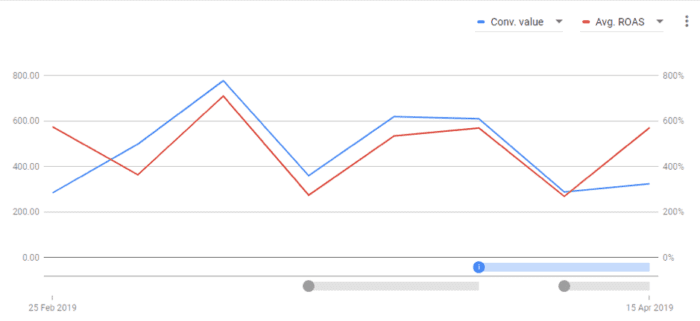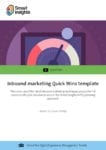Machine learning + PPC = boosted results
Pay-per-click (PPC) bidding has changed a lot over the years. Manual bidding still definitely holds its place in some circumstances, however, any proficient PPC specialist will be well aware of the more advanced options available and how they can give you significantly boosted results without the need to increase your budget.
Google offers a variety of automated bidding options all tailored to hit different goals. The main strategies available are:
- Target CPA
- Target ROAS
- Target Impression Share
- Maximize Conversions
Below are a few examples of when they should and shouldn’t be used, with some small use cases and examples of performance changes.
The technical stuff
All bidding strategies are affected by two important date ranges, the first being the learning period, which is the amount of time the machine learning algorithm needs to find the bidding sweet spot. The second is the conversion lag. This is the average amount of time it takes for a user to go from their initial click to actually converting. This can range from a few hours up to several months depending on the product.
It’s important to be aware that any major changes to a campaign using a bidding strategy can knock it back into the learning period. This includes changing the budget, so think twice when you’re making adjustments to budgets on campaigns with bidding strategies enabled. As with all things in pay per click advertising, there is no one solid solution to every problem. It’s all about running test after test to find what works best on each account.
Below I’ll go over the main bidding strategies, how they work and the best opportunities to use them. Once you’ve chosen the right strategy for the campaign in question and have started a test, you can easily check up on the bidding strategy by clicking on the bid strategy name in the columns shown at the campaign level to open up the bid strategy performance report.

Target CPA
Target CPA does exactly as the name suggests. You set a target cost per acquisition, either based on your own internal business data or by using the suggestion from Google. Either way, it’s important to ensure that your target is not completely impossible and that you’ve got the historical performance to back it up.
Target CPA is great for situations where a client has set a maximum cost per conversion required in order to break even and not lose money on a conversion. After all, there’s no use in bringing in thousands of conversions if they’re not profitable for the business. As target CPA works fully based on the figure you’ve set, you’ve got to ensure that the budget on the campaign is not limited.
The algorithm behind target CPA has one goal and that is to achieve the highest number of conversions available at or as close as possible to the price point you’ve entered. If your campaign is running with a limited budget, you’ll likely see very poor performance as the algorithm won’t account for this in the bids. If you’re running a campaign that cannot escape the clutches of “limited” status, target CPA is not the one for you.
Below is an example of Target CPA running on a campaign. This target was set around Google’s suggestion of £60 with previous performance hovering around this mark. Over the past two months, the CPA is currently at £51.55, so roughly 15% lower than before. The blue bar at the bottom shows the conversion lag of around 12 days, which indicates further conversions are likely to drop in, improving the CPA further.

Target ROAS
A close relative to the previously mentioned target CPA, the target ROAS bidding strategy works much the same but instead of entering a cost per acquisition goal you’re able to set a ROAS (return on ad spend) goal. Of course, this is only relevant to e-commerce businesses for producing some kind of revenue in their campaigns.
Target ROAS, as with CPA, is best used when a client has set a minimum return in order to make a profit on a sale.
As with the above, target ROAS will not work very well at all if you’re running with a limited budget and is also the only bidding strategy that requires a minimum amount of historical conversions in a campaign to be enabled. The minimum required by Google is 15 conversions in a 30 day period but I’d suggest holding off longer than this for best performance and aim for around 30 conversions in the last month.
The bid strategy report below shows the effect of target ROAS on a shopping campaign, as with most campaigns there were a couple of necessary budget changes that knocked the algorithm back into learning but the overall ROAS came in at 593% vs. the previous performance and initial target of 400%.

Target impression share
The final bidding strategy based on a target is target impression share. As you’d expect, this bidding strategy allows you to enter a target figure for your impression share and also allows you to choose the position at which your ad appears for these impressions.
As most people will now be aware, Google is sunsetting the “average position” metric and replacing it with two new metrics: Top of page and Absolute top of page, which refer to an ad appearing in either the top block of ads or the “absolute” number one position. These two metrics are used when setting up the target impression share so be careful when selecting where you want to appear and how often. The most common use for target impression share is in branded campaigns, however, it can definitely be used strategically in other circumstances.
The below use case for target impression share shows a great alternative. Below, we saw that a competitor to one of our clients had closed up business and the mass amount of traffic of users searching for their brand was now back in the consideration phase of the funnel. We set up a competitor targeting campaign aiming for 100% impression share at position one which, as the below graph shows after the initial learning period we held a steady average position of one and 100% impression share on almost all days. In turn, this generated an uplift in monthly revenue of almost 30% at double the average ROAS.

Maximize conversions
Maximize conversions is a great choice if you’ve got an account that’s performing well but has room to grow. This strategy isn’t going to have a great effect if you’re already achieving maximum impression share but if there’s still space to pull more conversions from the market and you’ve got a campaign that is not “limited by budget” it’s a perfect candidate for maximize conversions.
It’s important to know that with maximize conversions you should be ready to spend every single penny of your daily budget every day. Sometimes, it’s a common tactic to set a much higher daily budget that a campaign won’t spend just to ensure it doesn’t become limited. If this is how you’re running your campaign you have two options; choose a different bidding strategy or set your daily budget to a point that you’re fully willing to shell out every day.
Following on from maximize conversions, we’ll soon have a new bidding strategy from Google. The new strategy will allow you to opt for maximum conversion value, where the machine learning algorithm will focus on the users and set bids that it believes will drive the most revenue while not necessarily aiming for a CPA or ROAS target. If you’re running e-commerce campaigns and have a limited budget, maybe give this a try instead of target ROAS due to the performance issues seen with the targeting strategies and limited budgets.
Below is an example of maximize conversions being used on an e-commerce campaign. As you can see, the daily budget was actually decreased slightly at the start of the bid strategy (not best practice, but sometimes cannot be helped!) and conversion performance still saw a significant performance increase.

So which is best?
Overall, which bid strategy you choose should always be based on the goals of the campaign. If there’s a clear minimum ROAS or maximum CPA then test out one of the targeted strategies. If you’ve got a campaign performing well but with room in the impression share to grow and a budget that’s not limited, why not trial maximize conversions for a set test period and compare performance both before and after running the bidding strategy. There’s no one strategy to fit all campaigns and it could require testing a few different ones to see which works best.
If you’ve got the budget available, running tests in parallel is the best way to compare performance. Use the “Drafts & Experiments” feature in Google Ads to create a duplicate version of a campaign with your chosen bid strategy. If possible, aim to keep everything the same in terms of budgets, keywords, etc. and only judge the results of the test when the learning period is over making sure you’re not taking into account data that still falls under the conversion lag.
